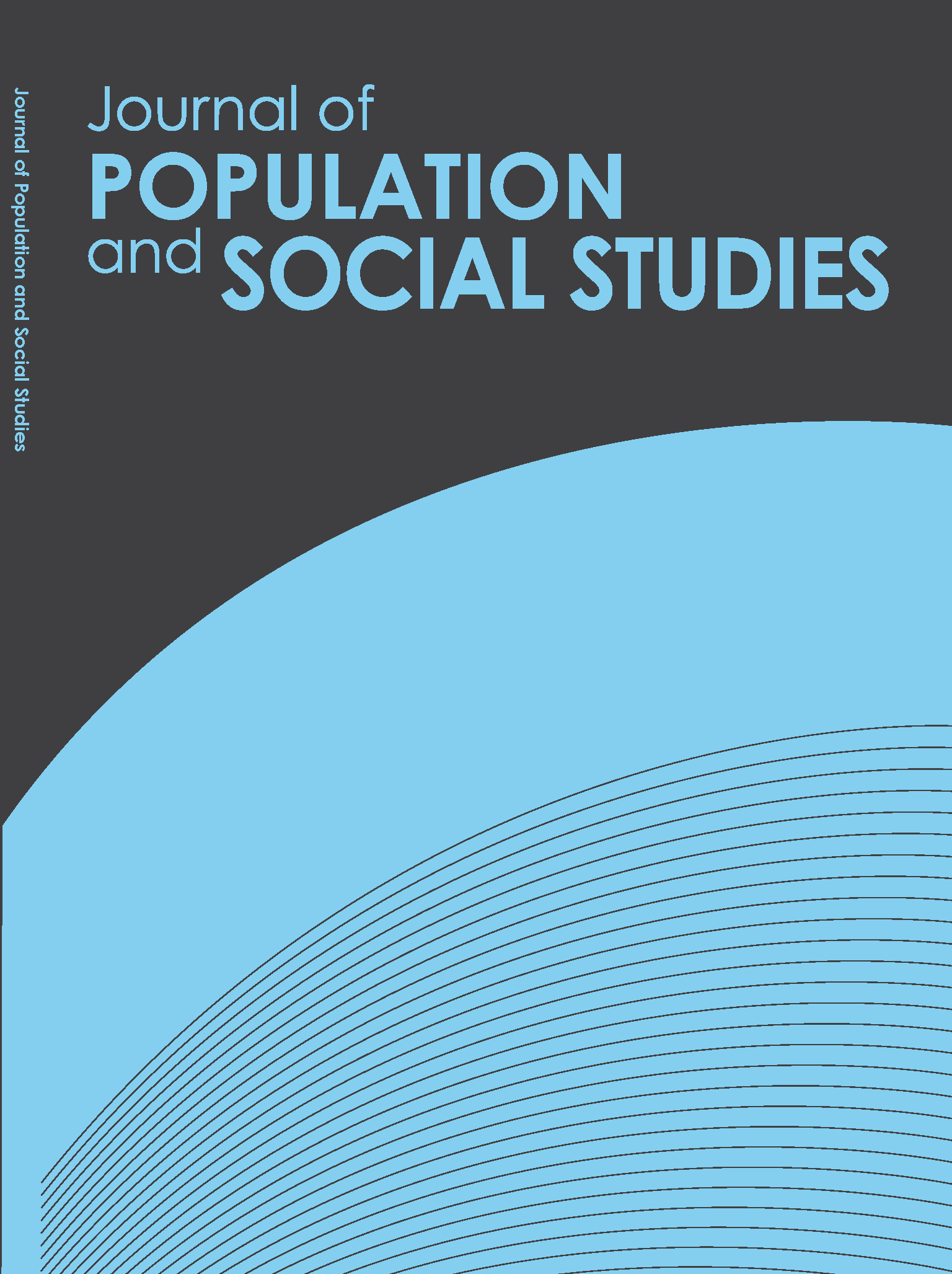Health and Educational Status of Rohingya Refugee Children in Bangladesh
Main Article Content
Abstract
A large number of Muslims have migrated to Bangladesh as refugees from Myanmar since 1991. The government of Bangladesh initially welcomed and accommodated refugees in twenty-one camps in Cox’s Bazar during the influxes in 1991-1992. Now, over 220,000 refugees, mostly drawn from the Rohingya ethnic group, are living in two primitive camps along the border, having fled the widespread forced labor and ethnic and religious persecution they received within Myanmar. Among the refugees living in the camps, children have been suffering from a variety of health problems including widespread malnutrition. This article explores the situation of Rohingya refugee children living in one of the camps with regard to their educational and health status. Key informant interviews using both primary and secondary sources of information were used to analyze the current situation. The study reveals that the health and educational status of Rohingya refugee children in Bangladesh may be an improvement over their life in Myanmar. However, gender discrimination is inherent in some of the programs providing health and education to Rohingya refugee children.
Article Details
References
Abrar, C.R. (1994). Repatriation of Rohingya refugees. Retrieved from http://www.burmalibrary.org/docs/Abrar-repatriation.htm
Abrar, C. R. (2012, June 20). Opening doors to Rohingya. The New Age.
Ahmed, I. (2010). The plight of the stateless Rohingyas: Responses of the state, society & the international community. Dhaka: The University Press Ltd.
Al-Mahmood, S. Z. (2012, June 12). Burmese Rohingya refugees find little respite in Bangladesh. The Guardian. Retrieved from http://www.theguardian.com/global-development/2012/jun/29/Myanmar-rohingya-refugees-bangladesh
Amin, K. (2012, June 15). Dhaka rules out shelter for Rohingya refugees. Priyo. Retrieved from http://news.priyo.com/national/2012/06/15/dhaka-rules-out-shel-53558.html
Ban on marriage with Rohingya refugees. (2014, July 11). The Daily Star. Retrieved from http://www.thedailystar.net/ban-on-marriage-with-rohingya-refugees-32826
Bridge Asia Japan. (2003). Brief report on activities, April 2003. Maungdaw, Myanmar.
Concern Bangladesh. (2001). Annual Report 2000: Rohingya Refugee Programme, Cox’s Bazar.
Concern Nutritional Survey. (2001). Sustainable development initiative network concern worldwide: Nepal. Nutrition Survey Report. Concern Worldwide.
Convention Relating to the Status of Refugees. (1951). Retrieved from http://www.unhcr.org/en-us/3b66c2aa10
Coutts, E. (2005). The Rohingya refugee situation in Bangladesh. Retrieved from http://www.rna-press.com/data/itemfiles/9bcc51b07210277172cfaca50dd60ff6.pdf
Danish Immigration Service, (2011, May). Rohingya refugees in Bangladesh and Thailand: Fact finding mission to Bangladesh and Thailand. Retrieved from https://www.nyidanmark.dk/NR/rdonlyres/B08D8B44-5322-4C2F-9604-44F6C340167A/0/FactfindingrapportRohingya180411.pdf
Devitt, R. (2011, September). Burma, Bangladesh and the Rohingya: A failure to protect. Retrieved from http://www.e-ir.info/2011/09/06/burma-bangladesh-and-the-rohingya-a-failure-to-protect/
D'Costa, B. (2012, August). Rohingyas and the 'right to have rights'. The Daily Star Forum6(8). Retrieved from http://archive.thedailystar.net/forum/2012/August/rohingyas.htm
Feeny, T. (2001). Rohingya refugee children in Cox’s Bazar, Bangladesh. A discussion document prepared for UNICEF Regional Office South Asia. Dhaka: UNICEF.
Ganguly, S. & Miliate, B. (2015, October 14).Refugees and neighbors: Rohingya in Bangladesh, The Diplomat. Retrieved from http://thediplomat.com/2015/10/refugees-and-neighbors-rohingya-in-bangladesh/
Garcia, S. & Olson, C. (2008). Rohingya: Burma’s forgotten minority. Refugees International. Retrieved from http://www.refworld.org/docid/494f53e72.html
Haque, E. (2013, July 2). Humanitarian vs. legal deals: human rights monitor Rohingya people. The Daily Star. Retrieved from http://www.thedailystar.net/beta2/news/humanitarian-vs-legal-deals/
Haque, S. (2012, September 16). Forced migration to mainstream: A study on Rohingyas refugees in Bangladesh. BD Today. Retrieved from http://www.bdtoday.net/english/thisweekdetail/detail/31
Human Rights Watch (HRW). (2000, May 1). Burmese refugees in Bangladesh: Still no durable solution. Retrieved from https://www.hrw.org/report/2000/05/01/burmese-refugees-bangladesh/still-no-durable-solution
Human Rights Watch (HRW). (2012, August 22). Bangladesh: Assist, protect Rohingya refugees. Retrieved from https://www.hrw.org/news/2012/08/22/bangladesh-assist-protect-rohingya-refugees
Imran, H. F. A. & Mian, M. N. (2014). The Rohingya refugees in Bangladesh: A vulnerable group in law and policy. Journal of Studies in Social Sciences, 8(2), 226-253.
Lanjouw, S., Mortimer, G., & Bamforth, V. (2000). Internal displacement in Burma. Disasters, 24(3), 228. doi: 10.1111/1467-7717.00144
Lewa, C. (2009). North Arakan: an open prison for the Rohingya in Burma. Forced Migration Review, 32, 11-13.
Lowenstein, K. A. (2015). Persecution of the Rohingya Muslims: Is genocide occurring in Myanmar Rakhine state? A legal analysis. Fortify Rights. Retrieved from http://www.fortifyrights.org/downloads/Yale_Persecution_of_the_Rohingya_October_2015.pdf
Médecins Sans Frontières (MSF). (2010, February 18) Bangladesh: Violent crackdown fuels humanitarian crisis for unrecognized Rohingya refugees. Retrieved from http://www.doctorswithoutborders.org/news-stories/special-report/bangladesh-violent-crackdown-fuels-humanitarian-crisis-unrecognized
Nurul, I. (2006, October 5). Facts about the Rohingya Muslims of Arakan. Retrieved from http://www.rohingya.org/portal/index.php/learn-about-rohingya.html
O'Sullivan, K. (2013, June 22). The plight of refugee: The uncertain future of Rohingya refugees. The Fair Observer. Retrieved from http://www.fairobserver.com/article/uncertain-future-rohingya-refugees
Papri, J. (2017). Marriage an uncertain path to citizenship for Rohingya refugees in Bangladesh. Radio Free Asia. Retrieved from http://www.rfa.org/english/news/myanmar/rohingya-marriage-01272017085033.html
Parnini, N. S., Othman, R. M., & Ghazali, S. A. (2013). The Rohingya refugee crisis and Bangladesh-Myanmar relations.Asian and Pacific Migration Journal, 22(1), 133-146. doi: 10.1177/011719681302200107
Rohingya Refugee BD. (2009, October 26). Rohingya refugee education program is getting worse to worse through RTMI. [Blog post]. Retrieved from http://rohingyarefugeebgd.blogspot.com/2009/10/rohingya-refugee-education-program-is.html
Smith, M. (1995, December). The Muslim Rohingya of Burma. Paper presented at the Conference of Burma Centrum Nederland.
South, A. (2005). Mon nationalism and civil war in Burma: The golden Sheldrake. London: Routledge.
Uddin, N. (Ed.) (2012). To host or to hurt: Counter-narratives on Rohingya refugee issue in Bangladesh. Dhaka: Institute of Culture & Development Research (ICDR),
Ullah, A. A. (2011). Rohingya refugees to Bangladesh: Historical exclusions and contemporary marginalization. Journal of Immigrant & Refugee Studies, 9, 139–161. doi: 10.1080/15562948.2011.567149
UNHCR. (n.d.). Voluntary repatriation. Retrieved from http://www.unhcr.org/voluntary-repatriation-49c3646cfe.html
UNHCR. (1999, 1-31 March). Refugees from the Rakhine State of Myanmar in Bangladesh - Situation Report No.99.
UNHCR. (2007). Bangladesh: Analysis of gaps in the protection of Rohingya refugees. UNHCR. Retrieved from http://www.unhcr.org/protect/PROTECTION/46fa1af32.pdf
UNHCR. (2016, 10 August). Education of refugees: Priority activities and requirements supporting enrolment and retention in 2016. Geneva: UNHCR. Retrieved from http://reporting.unhcr.org/sites/default/files/UNHCR%20Education%2020160810.pdf
Zinnat, M. A. (2016, 18 June). 3 lakh Rohingyas staying illegally. The Daily Star. Retrieved fromhttp://www.thedailystar.net/frontpage/three-lakh-illegal-rohingyas-1241512


